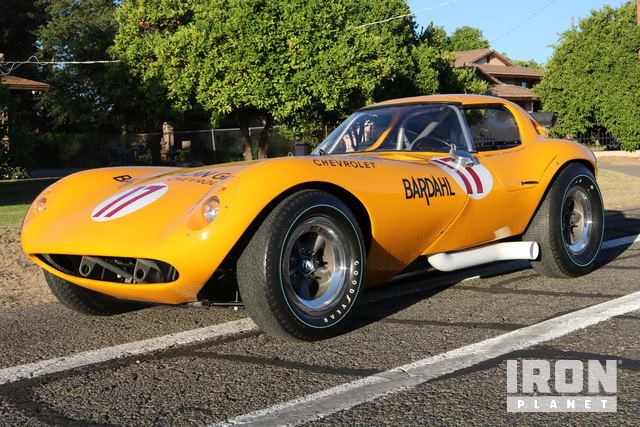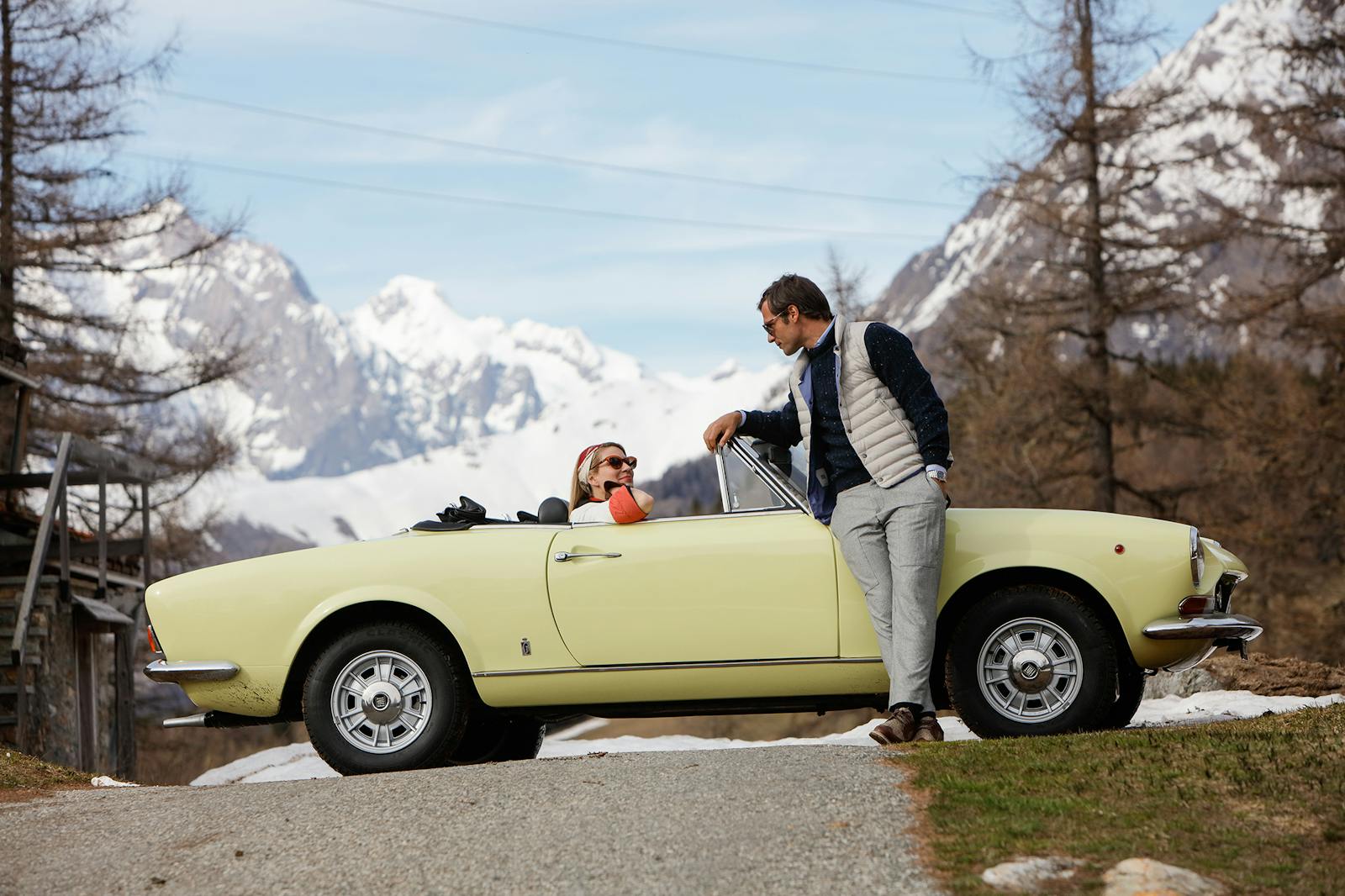Hit the track with these 9 great race cars up for grabs in Arizona
If you’re in the market for a muscle car or Corvette, you’ll be spoiled for choice during Arizona Auction Week. If you’re looking for your next track toy, on the other hand, choices are more limited. There’s still a lot to choose from, and we’ve got you covered.
Here are the nine most interesting, attractive, and exciting race cars up for grabs in Scottsdale. A few of them are even terrifying.
1997 Chevrolet Monte Carlo NASCAR

Barrett-Jackson: Lot #3002
Presale estimate: N/A
You don’t have to be a NASCAR fan to recognize the DuPont-sponsored Monte Carlo or know the name Jeff Gordon. Heck, you don’t even have to like cars all that much. That bright color scheme and the car’s driver are one of the most famous combos in stock car racing.
Gordon had already won his first Winston Cup championship in 1995 when he drove this car for the first time in ’96. It was built specifically for road course events, rather than the speedway, and Gordon took fourth at Watkins Glen with it. In 1997, he placed second at Sears Point and then won at Watkins Glen, which was his first road course victory. The car is reportedly all original with its road course suspension and brakes, and has since climbed the hill at the Goodwood Festival of Speed. Other ex-Jeff Gordon DuPont Monte Carlos have sold at auction before, including one from 2006 for $175,000 and one from 1998 for $115,000.
1959 Austin-Healey Mk I Sprite

Barrett-Jackson: Lot #1019.1
Presale estimate: N/A
Basically the Miata of the 1950s and ’60s, the Austin-Healey Sprite offered cheap thrills in a compact package with a handful of horsepower and lively handling. And, like the Miata, a lot of racers got their start in a Mk I Sprite, aka the Bugeye. And this Sprite is just one example of that. After retiring as a race car driver, Carroll Shelby started his School of High Performance Driving, which eventually became the Bob Bondurant School of High Performance Driving. During the Shelby days, this Bugeye served as one of three training cars for the school and did so for about five years. There are even photos of the car in period with a Cobra badge on the nose.
It then became an SCCA racer for many years but has since had a professional restoration to what it looked like at the Shelby school, Cobra badge and all. Bugeyes aren’t especially valuable cars, but the Shelby connection obviously carries some weight. A national championship-winning Bugeye sold for $60,500 in Arizona four years ago, and that is the current benchmark for a non-factory Sprite race car.
1964 Cheetah

Leake: Lot #644
Presale estimate: N/A
The Cheetah, created by Corvette racer Bill Thomas, is an outrageous car. With its short 90-inch wheelbase and lightweight spaceframe chassis, it tips the scales at 450 pounds less than the 289 Cobras it was designed to compete against, and its Rochester fuel-injected small-block put out up to 520 horsepower. One clocked 215 mph at Daytona. The fiberglass gullwing doors (some cars were aluminum) were known to blow open on long straights, and the car was a handful to drive through the corners. The Corvette engine is set so far back in the chassis that it doesn’t even need a driveshaft to power the rear wheels, just a u-joint connecting the transmission to the differential. The cockpit is cramped and gets very hot.
Thomas intended to build 100 cars to homologate it for racing against the Cobra and even got backing from Chevrolet, hence the extensive use of GM components from the drivetrain to the brakes. After Chevrolet pulled its support, however, the program was over and the last one was completed in the fall of 1965, and the Cheetah had to race with purpose-built sports racers like McLarens and Genies. Sources vary as to how many were built, but the number is somewhere around 15. This Cheetah, up for grabs at Leake, is reportedly the car campaigned by Alan Green Chevrolet and driven by Jerry Grand at Daytona in qualifying before sustaining damage. It has since been restored and looks ready to race.
1955 Kurtis 500 Swallow Coupe

Bonhams: Lot #70
Presale estimate: $200,000–$300,000
Frank Kurtis is mostly known for his all-conquering Indy cars that won the Indianapolis 500 five times in the 1950s, as well as countless other events, but he also built sports cars using a chassis similar to his open-wheel racers. Many wore a bare bones body that looks like an Indy car with cycle fenders, but others wore fuller fiberglass bodywork supplied by various sources. Engines were varied as well. This Swallow Coupe features a body by Allied, a Los Angeles-based company. For its “Swallow” body shell, Allied took inspiration from Cisitalia. Underneath the fiberglass is a 317-cubic-inch Lincoln Y-block V-8, reportedly making 257 horsepower. The car was originally prepped for the grueling Carrera Panamericana in Mexico, but it never got the chance since the 1955 event was canceled indefinitely after the disaster at Le Mans.
It is now set up for vintage racing and driving events with fuel cell, fire system, and roll cage, along with a five-speed in place of the original three-speed. We last saw this car at RM Sotheby’s Andrews Collection auction in 2015, when it sold for $220,000.
1967 Chevrolet Camaro Z/28

Bonhams: Lot #36
Presale estimate: $300,000–$400,000
The SCCA’s Trans Am series was the front line of the pony car wars in the late 1960s and early 1970s, and this Z/28 is a decorated veteran. While not as famous as the Bud Moore Mustangs, Sunoco Camaros, or Mark Donahue’s AMC Javelin, it won 11 races and took second place twice over the course of the 1967–69 seasons. Reportedly the 17th of 25 pre-production Z/28s, it also starred in period Gulf Oil television commercials and has since been prepped for vintage racing.
1970 McLaren M8C

Bonhams: Lot #101
Presale estimate: $250,000–$350,000
In the Can-Am series, the turbo Porsche 917s blew everybody away in 1972, but before that McLaren was the team to beat with five straight championships. The factory team cars of Bruce McLaren and Denny Hulme were practically in a class of their own, while demand from privateer racers led McLaren to contract construction of its M8 model to a company called Trojan.
This M8C is one of three Trojan-built M8s originally shipped to Argentina for use as a development car for Ford. It’s the only one that actually raced down there, powered by a small-block Ford V-8 in several races in both Argentina and Brazil. The car comes with the necessary bits to put it back to its original Ford power, but it currently has a more conventional 350-cu-in Chevy. There are more extreme Can-Am cars than this one, but its 650 horsepower should be more than enough to scare you half to death.
1961 Sunbeam Alpine Harrington Coupe

RM Sotheby’s: Lot #135
Presale estimate: $130,000–$160,000
Sunbeam designed the Alpine as a roadster, but eventually contracted out construction of a coupe version to Thomas Harrington & Sons, primarily a manufacturer of bus bodies that also converted Alpines on special order. For the conversion, Harrington fashioned a fiberglass roof section and shorter trunk lid. Harrington Alpines are gorgeous but they’re a rare sight with only a few hundred built.
This Harrington NART Coupe sold new to an Italian living in Boston, who ordered it with the hottest available Hartwell-tuned engine. He raced it at Sebring in 1962 as a Rootes Motors works entry, finishing 33rd out of 37 finishers, then brought it back to Sebring the next year with a little help from Luigi Chinetti’s North American Racing Team (NART). Mostly known for its success with Ferraris on the track, NART also ran cars from other manufacturers and this Sunbeam is just one of them. It finished 36th overall and fourth in class behind two Porsches and another Sunbeam but in front of NART’s OSCA. The car was restored to its period NART livery in 2002 and has been a historic racer since. It has had only four owners from new, and RM Sotheby’s sold it in London in 2016 for £109,200 (about $145,700 at the time).
1956 Cooper Bobtail

Bonhams: Lot #84
Presale estimate: $125,000–$150,000
Cooper started building a new tube-frame, alloy-bodied, mid-engine sports racer called the T39 in 1955. The bodywork is sharply cut off at the back, leading to the nickname “Bobtail.” Only a few dozen were built, but they won races all over the world, including Australia. This Bobtail was imported by future F1 World Champion and Cooper factory driver (and Aussie) Jack Brabham in 1956 and quickly went to its first owner, who raced it to a few wins Down Under. It has since been used as a historic racer and has a 1460-cc Coventry Climax FWB engine that makes 108 hp, plenty to push around a car that weighs about 900 pounds. Bonhams consigned the car for the Quail Lodge auction last year, but it was a no-sale at a $150,000 high bid.
1967 Austin-Healey Sprite Streamliner

Bonhams: Lot #49
Presale estimate: $100,000–$140,000
If the Shelby Sprite above isn’t racy enough for you, this factory Streamliner up for grabs at the Bonhams auction might do the trick. In order to make the Sprite competitive in the small displacement classes for endurance racing, Healey produced a wind-tunnel-tested streamlined aluminum shell with a Kamm tail. Healey also fitted a 1293-cc version of the Sprite’s A-Series four along with a Weber carb. The streamlined Sprites had reasonable success with class wins at both Sebring and Le Mans. Curiously, this one never went racing but was used as a promo vehicle at a Philadelphia car dealership. The presale estimate is a ton of money for a Sprite, but a works rally car sold for £109,250 (about $141,000 at the time) in 2018.
Like this article? Check out Hagerty Insider, our e-magazine devoted to tracking trends in the collector car market.

